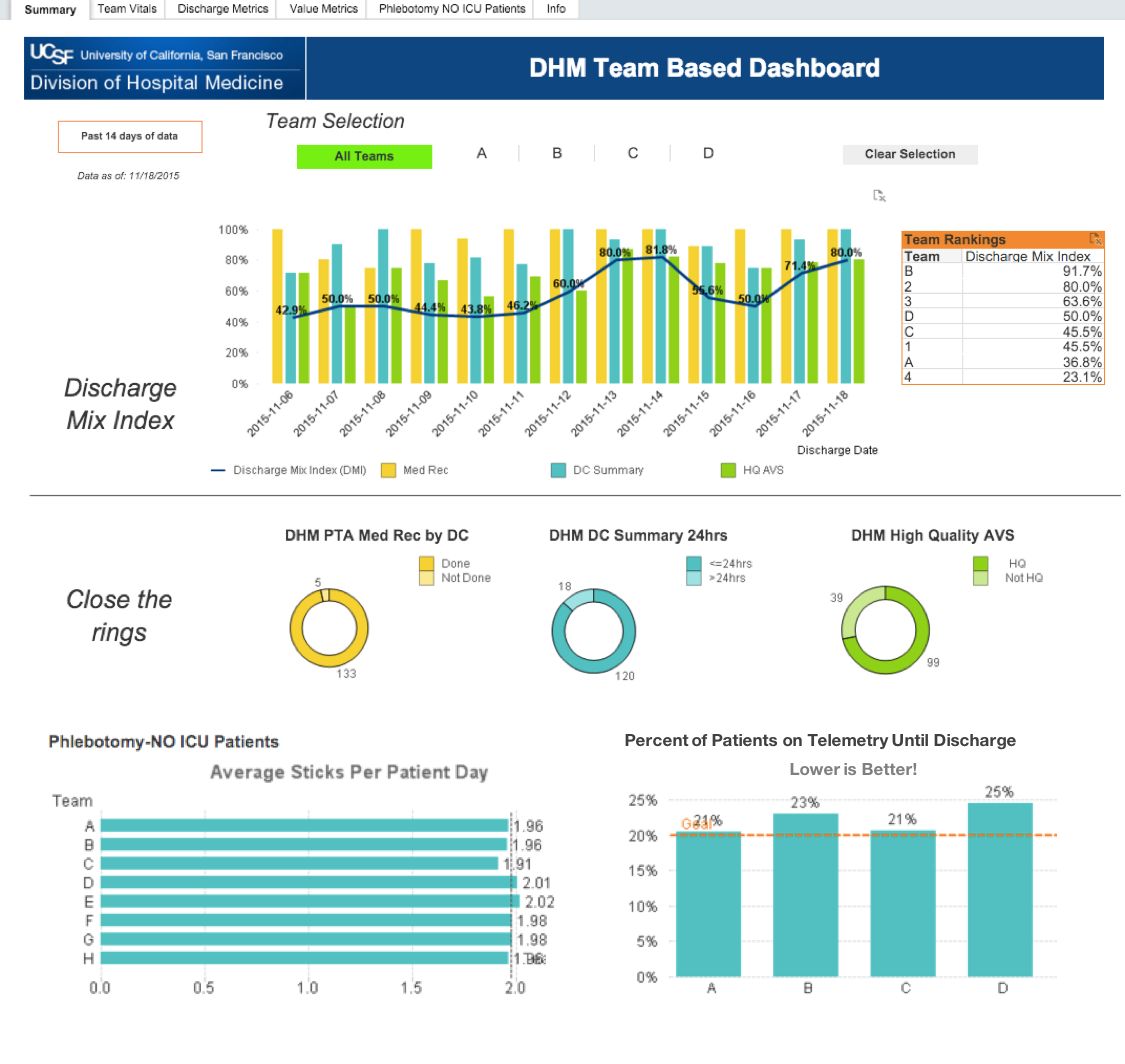Background: Audit and feedback is a commonly used strategy to improve performance among providers. Most prior studies on its efficacy were done in the outpatient setting and showed a modest benefit. Certain factors, such as clear targets and repeated frequency of feedback may increase the likelihood of improved performance; however, there is still no consensus on the most effective methods of providing audit and feedback, especially in the inpatient setting.
Purpose: To develop a new method of inpatient audit and feedback that is timely and actionable, easy to use and implement, and fits into the physician’s workflow.
Description: We developed the “Feedback Bundle”: a novel electronic dashboard coupled with weekly data review.
The dashboard is a web-based interface that automatically queries and analyzes inpatient data from the electronic health record, and displays it in a visually appealing graphical format (Figure 1). It reports performance data on selected quality improvement priorities in real-time and on a team-based level, and can be accessed at the provider’s convenience.
The primary page features a score that we call the “Discharge Mix Index (DMI)”, which incorporates the following discharge quality measures: medication reconciliation on discharge, a discharge summary done within 24 hours, and a high quality after visit summary. The DMI is displayed as a graph to allow for tracking of daily performance and historical trends. On the bottom half of the screen is a section called “Close the Rings”, where percent completion of individual components of the DMI are visualized as incomplete circles. Teams are incentivized to improve their DMI performance by “closing the rings”. In addition, teams can compare their DMI score via the “Team Rankings” table.
Other sections of the dashboard show inpatient quality metrics, such as phlebotomy and telemetry use, along with clearly displayed performance targets (Figure 1). This data can be displayed at the level of the medicine service, team, or individual patients. At the patient level, a link to their electronic health record is provided to allow for further investigation and action if warranted.
The dashboard allows for the implementation of the second part of the Feedback Bundle, “Data Rounds”, which occur once weekly. During Data Rounds, teams use the dashboard to review and discuss their performance together in a semi-structured format. They are given resources on how to improve their performance and high scoring teams are asked to share their strategies. This encourages group learning and collaboration.
Conclusions: The Feedback Bundle is a novel system of audit and feedback consisting of an electronic dashboard and structured data review. We believe this method has greater potential to improve inpatient performance because the dashboard presents data that is timely and actionable, easy to understand, and allows for weekly group review and discussion via Data Rounds. A randomized control trial is underway to test the efficacy of the Feedback Bundle.
